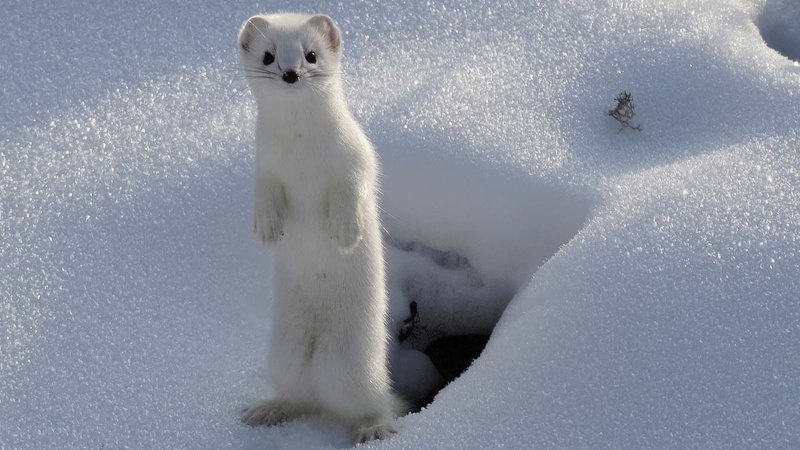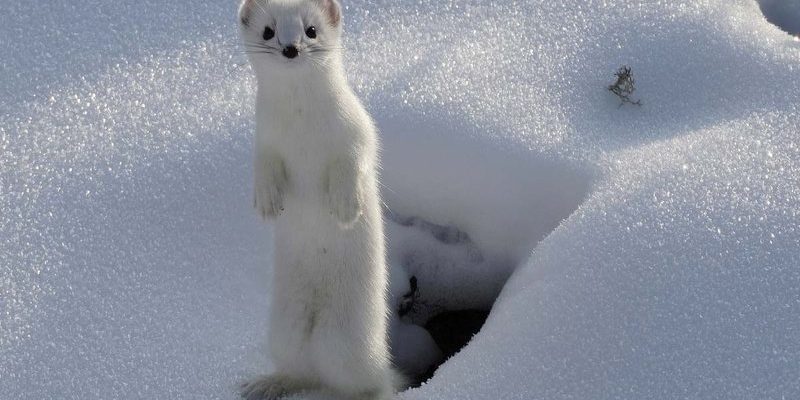
So, what makes the ermine so special? Well, it’s not just their charming appearance; it’s how they interact with other species and contribute to their habitats. They act as both predator and prey, carving out their niche in the food web just like each of us has our own place in society. Let’s dive deeper into the fascinating role of the ermine in its ecosystem.
1. What is an Ermine?
Before we unpack their role in the ecosystem, knowing what an ermine is helps set the stage. Ermines, or stoats, belong to the weasel family and are often recognized by their striking white winter coat, which helps them blend in against the snow. In summer, their fur turns a rich brown, providing excellent camouflage among the foliage.
Typically, these small mammals measure about 12-30 inches long, including their bushy tails. They’re agile hunters, with keen eyesight and a sharp sense of hearing. This adaptability allows them to thrive in diverse habitats, ranging from woodlands to tundra and even mountainous regions. So, the next time you spot one, remember that it’s not just a cute critter; it’s a vital participant in its environment!
2. Predatory Role in the Food Web
Here’s the thing: ermines are excellent hunters. They primarily feast on small mammals like rabbits, mice, and voles, making them an important predator in their ecosystem. By keeping populations of these species in check, ermines help maintain a balance that prevents overpopulation and subsequent depletion of vegetation.
Think of it this way: if the ermine didn’t control the population of small mammals, those critters could multiply quickly, leading to overgrazing of plants and flowers. This chain reaction could affect other species that rely on those plants for food and shelter, demonstrating just how interconnected ecosystems can be.
Additionally, ermines are skilled hunters that often employ unique tactics. They can burrow into snow or even chase their prey into their dens. This hunting strategy highlights their adaptability and effectiveness as predators, ensuring the health of their populations and, ultimately, the environment around them.
3. As Prey: A Vital Link
While ermines are adept hunters, they also serve as prey for larger predators such as hawks, owls, and foxes. This position in the food web emphasizes their role not just as aggressors but as a food source for other species, adding depth to their ecosystem involvement.
When you think about it, the ermine’s role as prey is just as crucial as that of a predator. By being a food source for larger animals, they help support those populations and maintain a diverse food web. Without a healthy number of ermines, predators would struggle to find food, which could lead to a decline in their populations as well.
Moreover, this predator-prey dynamic helps sustain a balanced ecosystem. It ensures a flow of energy from one trophic level to another, which is essential for the overall health of the environment.
4. Habitat Engineers
Ermines also play an indirect role in shaping their habitats. While they might not build nests like beavers or burrow systemically like moles, their hunting behaviors influence the populations of other species. By predating on small rodents, they help keep these populations at bay, preventing them from over-burrowing or overfeeding on plant life.
This kind of natural regulation can lead to healthier plant populations, which in turn support a variety of other wildlife. In essence, ermines serve as a natural checking force, allowing the ecosystem to thrive without human interference. It’s a bit like how a well-run team relies on all its members to play their parts effectively.
5. The Importance of Biodiversity
Ultimately, the role of the ermine is a reminder of why biodiversity matters. Each species, no matter how small, contributes to the ecological tapestry that keeps our planet functioning. The ermine’s presence helps sustain a healthy balance, ensuring that various species can coexist.
When biodiversity is strong, ecosystems are more resilient. They can better withstand changes, whether it’s climate fluctuations or the encroachment of human activity. Losing even one species, like the ermine, can set off a domino effect, leading to disruptions that impact countless others.
This interconnectedness is something we often overlook in our fast-paced lives. But the more we understand the role of every creature—big or small—the more we can appreciate the magic of nature.
6. Conservation Efforts
As cute and crucial as they are, ermines face threats from habitat loss and climate change. Urbanization and deforestation can shrink their living spaces, making it harder for them to thrive. Efforts to conserve their habitats not only protect the ermine but also safeguard the entire ecosystem that relies on them.
Conservation initiatives often focus on creating protected areas where ermines can roam freely, hunt, and breed without interference. By raising awareness about their importance, we can inspire others to take action. Whether through supporting local wildlife organizations or even just spreading the word, we can all contribute to preserving these little guardians of the ecosystem.
7. How You Can Help
You might be wondering, “What can I do to help the ermine and its ecosystem?” Here are a few simple steps that anyone can take:
- Support local conservation efforts by donating or volunteering.
- Educate others about the importance of all species, including the ermine.
- Reduce your carbon footprint to help combat climate change.
- Participate in clean-up days to protect natural habitats.
Every little bit counts! By connecting with nature and doing your part, you can help create a future where ermines and other wildlife can thrive.
In conclusion, the ermine plays a multifaceted role in its ecosystem, acting as a predator, prey, and even a habitat engineer. Understanding and appreciating their contributions can lead us to better conservation practices and a deeper love for the natural world. So the next time you see one of these fascinating creatures, remember the vital role they play in maintaining the delicate balance of life around us.

